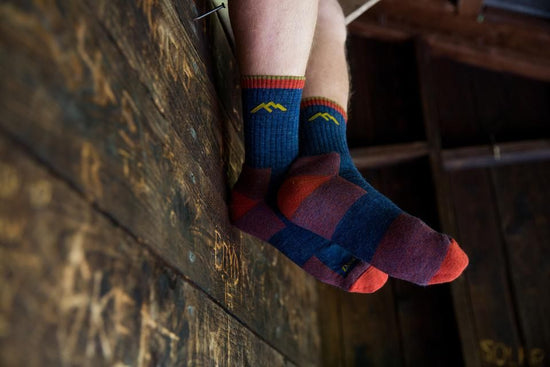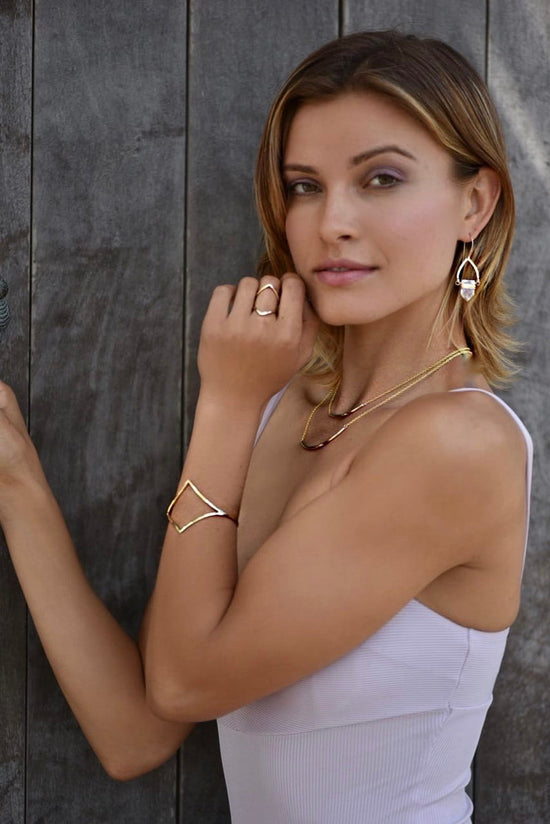The Bandana must be one of the most versatile items of clothing ever invented, and they have a history that spans centuries and is far more fascinating than these printed, 20” x 20” squares of cloth would suggest.
Bandanas originated on the Indian subcontinent where they began being made using a centuries old tie-dyeing technique called badhnati or bāṅdhnū meaning “to tie. This is the root of the word bandana.
Eventually, these cloths were imported to Europe and the Americas, many with the traditional curved, teardrop-shaped pattern that is an old Indian-Persian design. However, this design, now known to us as paisley, is named after the Scottish town in which fabrics with these patterns were later manufactured.
The classic red color of bandanas, called Turkey Red, was originally produced during the 1800s using a process that called for ingredients such as madder root, sheep’s dung, olive oil, and other less than likeable materials, and while the red, paisley style is still the color and form most folks identify with the bandana, it was not what appeared on the earliest bandanas made in America.
The first bandana printed in America involved a historical figure not best known for being an outlaw. This rebel, named Martha Washington, defied the British ban on textile printing in the colonies and hired John Hewson to print a bandana with the image of her husband on horseback surrounded by cannons, militia flags, and the words “George Washington, Esq., Foundator and Protector of America’s Liberty and Independency.”
Martha’s bandana was pure political propaganda, and it began a long tradition of using the bandana as a symbol of solidarity and endorsement. Bandanas were made to show support for the presidential candidacies of Teddy Roosevelt, Dwight Eisenhower, and other presidential hopefuls as well as advertisements for things as varied as corn flakes, Coca-Cola, and California.
The bandana has also been used to show allegiance to a variety of groups in American history. A red bandana was worn around the neck to show union support during the Appalachian coal miner’s strikes during the 1930s (which may have been the source of the term “redneck.”). More recently, bandanas of different colors were used in various ways to show everything from one’s sexual preferences to membership in a street gang.
As an article of clothing, the bandana has been worn as a headband by Geronimo (an Apache chief), Rosy the Riveter (fictional woman in WWII posters), and music icons such as, Bruce Springsteen, Willie Nelson, Tupac Shakur, and many, many others. In addition, the bandana has been worn as a neckband, a face mask, a hair tie, a bracelet, and (for the petite) a belt or bikini.
But it is when we pass beyond its use as a decorative piece of clothing, that the bandana’s versatility really begins to shine. In addition to containing a sneeze, cleaning my eyeglasses, or dusting a computer screen, I have used one of these cloth squares to create a temporary sling for my son’s broken arm, to mark the last place I saw a trail I had lost, and to make bunny puppets to entertain my grandchildren. In fact, there are so many ways to use a bandana, that it may be better to list a few rather than write the book-length article it would take to describe them all.
Some of the more common uses of bandanas are as:
- A mask to exclude dust, pollen, and (when wetted) smoke or tear gas
- A small bag (when the ends diagonal to each other are tied together)
- A cold compress
- A bandage, tourniquet (not recommended for amateurs) or hose leak plug
- A napkin, handkerchief, or emergency diaper
- A sling to immobilize an injured arm or shoulder
- A washcloth or small towel
- A hot pad for taking things off the stove or campfire
- A sling to toss stones (think David & Goliath and practice this away from other people)
- A filter for water or fuel with foreign material in it (boil the water if it is for drinking)
- A wrapper for delicate items or to quiet noisy ones in your pack or bag
- Earmuffs (not the best, but way better than nothing)
- A blindfold/sleep mask (great for all sorts of games)
- A puppet or prop for magic tricks
- A clean seat cover or a mini tablecloth
- A cover to keep insects away from food on a picnic table
- A marker to find your car or luggage
- An emergency gas cap or sink drain plug
- A replacement for rope when things need to be tied together
- A signal flag to show location, request help, or use while cheering your team or waving good-bye
For me, the most stirring story about the bandana is that of Welles Crowther. He became known as The Man in the Red Bandana because no one knew the real name of the person who saved their lives during the catastrophic events of 9/11. Welles was a young equities trader in the World Trade Center who wore the red bandana he always carried with him to filter out smoke and debris while he guided people to safety in the burning building.
Welles died during his valiant effort to help people, and those he saved referred to him only as The Man in the Red Bandana because no one knew his name. With the help of some of the people he saved, Allison Crowther, Welles’ mother, was able to identify Welles as their rescuer and began to hand out red bandanas in remembrance of her fallen son. Along with each one she gave the following instructions, "Be courageous, care for others, a hero lives in you.” With those words, what was but a simple piece of cloth is, once again, transformed into a powerful symbol. A symbol that asks the age-old question: Will you rise to the call?



